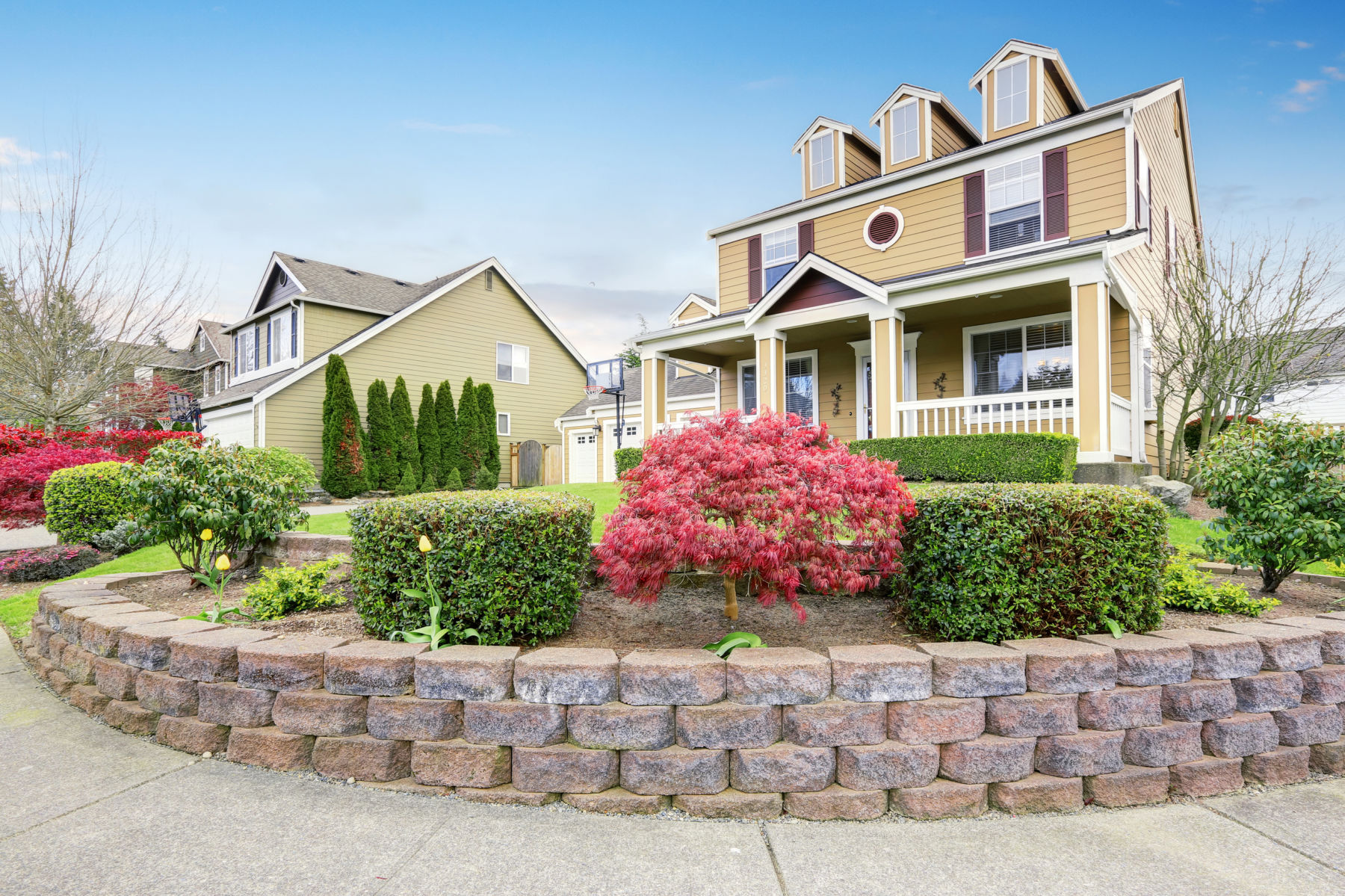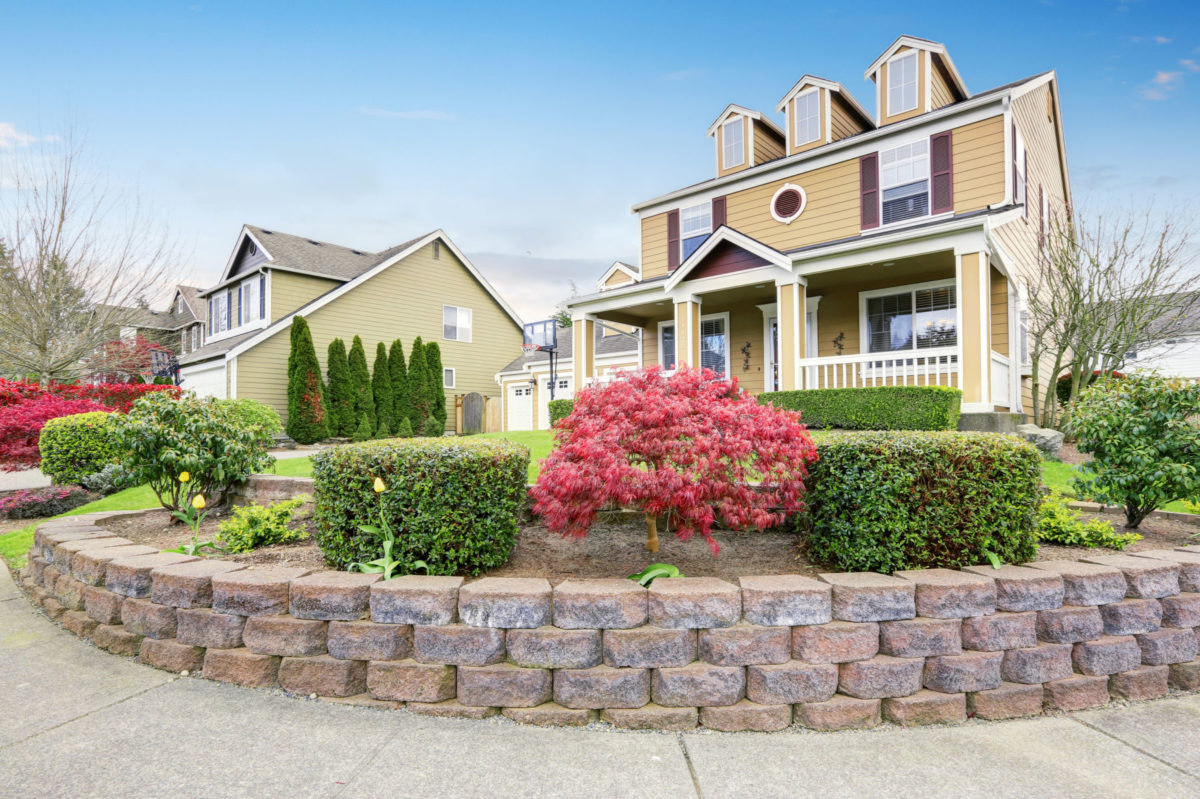
If you need to sell your current home before buying that adorable bungalow you’ve had your eye on, you have your work cut out for you.
Getting your house ready for the market requires work — cleaning, de-cluttering, repairs and maybe even paint.
Those are just the interior tasks; the exterior may need some attention as well. You’ve no doubt heard about curb appeal – you may even have some ideas on how you might go about adding some to your home to help it sell quicker and for top dollar.
The problem is that when one is not just selling a home but also purchasing another, money can be tight. Read on for three low-cost tips that you can use to boost your home’s curb appeal.
1. Lighting
Outdoor lighting gives a home more than curb appeal – it provides safety, ambiance and a dramatic but warm welcome. Experts at Better Homes and Gardens suggest that if you do nothing else outdoors, light the pathways and the trees.
When deciding where to place lights, don’t neglect the most important areas. These include:
- Walkways
- Steps
- Patio/Porch
- Driveway
- Water features
While inexpensive solar lights that you just stick into the ground are fine, they don’t cast the amount of light that other fixtures do.
If it’s in your budget, consider LED lighting. The lights last for as long as 100,000 hours, according to the experts at Whitmer’s Lighting in Ohio. They also tolerate wicked weather better than other forms of lighting.
Whitmer’s also mentions three different types of lighting schemes.
- Down-lighting – Giving the illusion of the moon shining on the landscape, this type of lighting is achieved by placing the lights overhead, such as in a tree, and facing downward.
- Up-lighting – This style of lighting is more dramatic in that the lights are pointing directly at a feature in the landscape.
- Cross-lighting — Whitmer’s claims this type of lighting is best for eliminating unwanted shadows. It involves placing lights both in front and in back of the element you want to highlight.
Most homebuyers will view your home during daylight hours, so snap some photos of the home’s well-lit evening look and leave them out where potential buyers can see them.
2. Use container plants
Even if you can’t afford to purchase mature shrubs and trees for the front yard, you can still add plants. Container plants can add just the pop you need, especially if you choose ornamental pots and use them to hold plants with colorful flowers or interesting foliage. Consider creating a vignette on the front porch or back deck or line the walkway or driveway with the potted plants.
To keep it interesting, vary the size and design of the pots as well as the design’s height. Use plant stands toward the back of the vignette to raise plants in shorter pots.
When planting, use the “Thriller, Filler, Spiller” concept of planting to create additional interest. This design technique calls for three different types of plants in one pot.
- Thrillers are tall, striking plants, such as ornamental grasses or cannas. These are the stars of the container and are typically planted in the back or in the middle of it.
- Fillers are the plants that you’ll stick around the thrillers. Rounded or mounded plants are ideal fillers. Consider petunias, coleus or dusty miller.
- Spillers are the trailing plants you’ll want to put at the edges of the pot so that they can spill over the sides. Suitable spillers include bacopa and nasturtium.
3. Green up the Lawn
Improving your lawn is one of the least expensive curb appeal projects to tackle. Take care of dead patches by raking them and then adding seed or grass plugs to fill in the bare spots.
Apply weed and feed to get rid of the weeds and fertilize the turf. Keep the lawn well-watered and mow it to the mower’s highest setting during the marketing of the home.
If your lawn is in bad shape, consider installing sod before putting the house on the market. The average cost of sod installation, nationwide, is between $1,041 and $2,690, according to homeadvisor.com.
